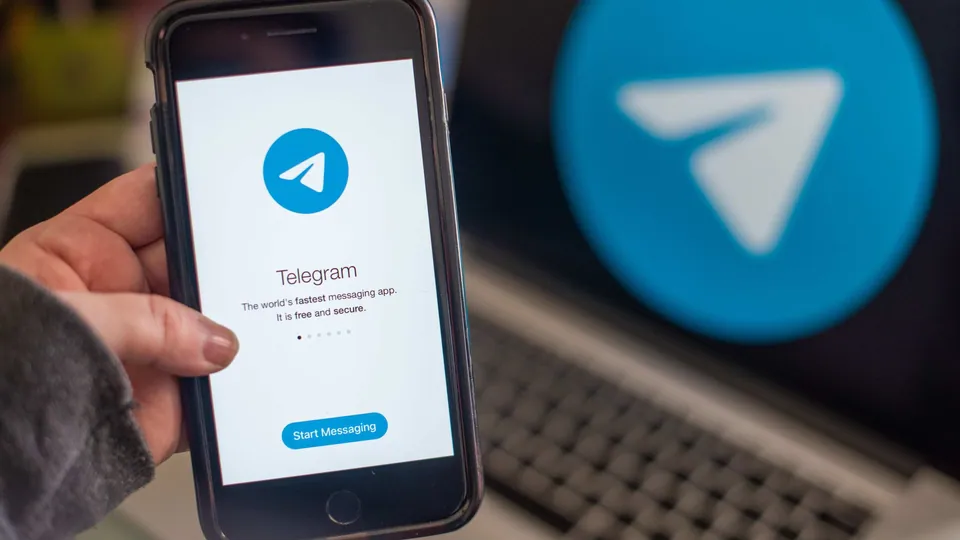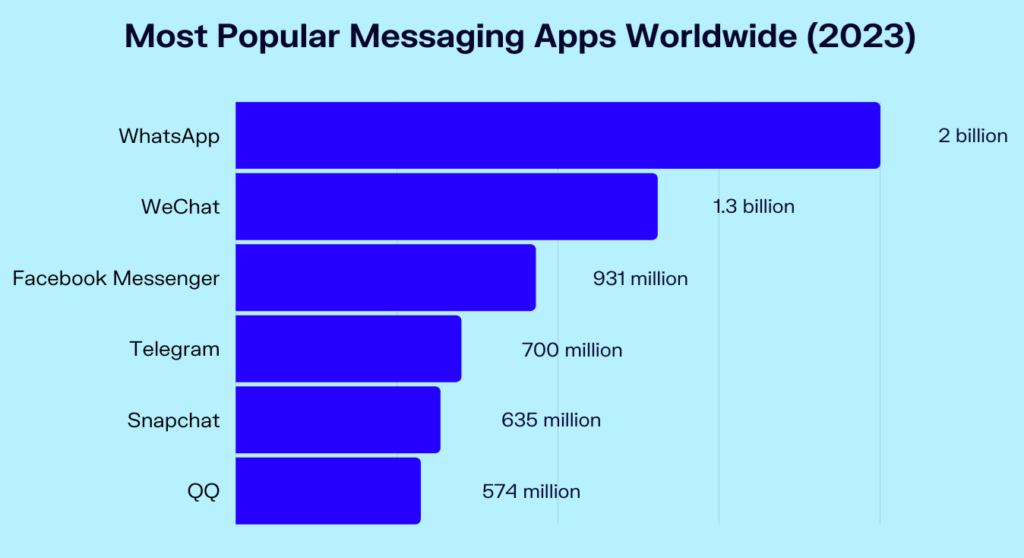In today’s digital age, many messaging apps have become essential to our daily lives. However, have you ever wondered how these platforms, like Telegram, make money? With a seemingly free service, it is natural to question how they generate revenue and continue to provide us with messaging capabilities. Let us uncover the mystery and explore the business model behind Telegram’s success.
Telegram is a popular messaging app that offers users secure and fast messaging options and a host of additional features. It boasts millions of active users worldwide, making it one of the leading players in the messaging app market. However, unlike many other popular messaging apps, Telegram does not rely on advertisement revenue to sustain its operations.
So, how does Telegram make money? While the app does not charge its users for essential services, it has adopted a unique revenue-generating approach. By exploring alternative methods and embracing user collaboration, Telegram has found innovative ways to monetize its platform without compromising user experience. Let us dive into Telegram’s strategies to ensure its financial sustainability while offering us a free messaging service. However, before that, let us see how Telegram differs from others.
How is Telegram Different from Other Messaging Apps?

1. Storage
The basis for Telegram’s operation is cloud storage. Because cloud storage is dynamic, you may access your data from many different devices at any time without creating a backup.
Cloud storage makes data available for the user because it allows you to track your sessions and download your stuff whenever you want.
2. Quality Compromise
Users of Telegram can choose to transmit their data in an uncompressed format.
Images frequently compressed by other messaging apps lose information when compressed, but Telegram’s capability allows you to communicate data without experiencing transmission loss.
3. File Size and Type
The maximum amount of data you can send using Telegram is 1.5 Gigabytes. You can transmit essential 4K video clips and even that casual outing video you made possible by transferring memory-intensive files.
The Cloud Storage receiver’s ability to stream videos while downloading them in the background simplifies video previewing.
Telegram is the go-to messaging software for sending those uncommon file formats you had trouble with, and that caused you to search the Internet for a means to send them because it does not restrict users to sending only specific sorts of files.
4. Bots, Groups, & Channels
A bot is a Telegram account that software runs instead of a human. It typically has AI capabilities that allow it to perform tasks like teaching, playing, searching, broadcasting, polling, reminding, and more.
You can add members to Telegram groups from your contact list or invite them to join using a link. These groups are limited to 200,000 members, not including bots.
In simple terms, channels are groups to which the admin is the only one who may post. These channels have infinite followers and can be used to broadcast texts, photos, and videos.
5. Privacy & Currency Exchange
The founder of Telegram created a unique data protocol that safeguards user data, and the company’s servers are located in a highly secret place. Chats are secure because they use Diffie Hellman, RSA, and AES encryption.
This has made it possible for users to conduct business using bots, and individuals now choose Telegram over other services when transferring money because of its increased security.
How Does Telegram Make Money

First and foremost, it’s important to note that Telegram is primarily self-funded. Its founder, Pavel Durov, has invested his money and resources into developing and maintaining the app. However, Telegram does have plans to monetize its platform in the future. Let us look at some potential revenue streams:
- Initial Coin Offering (ICO): In 2018, Telegram raised significant money through an ICO for its blockchain platform TON (Telegram Open Network) and its native cryptocurrency, Gram. The ICO was a private sale of tokens to investors, allowing Telegram to secure funding for its ambitious project.
- Private Investments: In addition to the ICO, Telegram attracted private investors interested in its platform’s potential. These investors injected capital into the company, contributing to its overall funding and financial stability.
- Freemium Model: While many features on Telegram are entirely free, the app offers additional services and functionalities through its premium version, Telegram Plus. This paid version includes extra cloud storage, animated stickers, and custom themes. Users can upgrade to the premium version for a subscription fee, allowing Telegram to generate revenue.
- In-App Purchases: Telegram also generates revenue through in-app purchases. Users can buy stickers, emoji packs, and other digital items to enhance their messaging experience. These purchases contribute to the company’s financial earnings.
- Enterprise Solutions: Telegram offers specialized services for businesses and enterprises, known as Telegram for Business. These include tools for customer support, messaging automation, and data analysis. Telegram can generate revenue through tailored solutions that cater to businesses’ needs.
- Potential Future Revenue Streams: Telegram has floated the idea of introducing ads on its platform through public channels or sponsored content. However, while this was initially considered, Telegram’s founder, Pavel Durov, has stated that ads would only be introduced if the company required additional funding to support its operations.
- Donations: The Telegram Donation Bot, which users may apply to their Telegram channels, is now available through the app. Using the Telegram Donate Bot, the company invites people to test the bot by donating to its cause.
It is important to note that Telegram’s primary focus is on providing a secure and user-friendly messaging experience rather than solely relying on monetization. The company’s dedication to user privacy and data protection is critical to its popularity. Nonetheless, the various revenue streams enable Telegram to sustain its operations and continually develop new features for its users.
Telegram Competitor Analysis

The goal of mobile messaging apps is to facilitate smooth text communication. The quick messaging feature of these apps draws billions of users. In 2021, 3.09 billion consumers communicated with the most popular mobile messaging apps, according to Statista.
According to the same report, this number will rise to 3.51 billion users in four years. A summary of the most popular messaging applications would show each company’s position in the mobile messaging apps market.
- WhatsApp (MAU: 2 billion)
- WeChat (MAU: 1.2 billion)
- Facebook Messenger (MAU: 988 million)
- QQ (MAU: 574 million)
- Snapchat (MAU: 557 million)
- Telegram (MAU: 550 million)
Telegram’s monthly average users (MAU) place it sixth on the list. MAU is a crucial performance indicator showing how many people visit a website monthly. It’s important to remember, too, that rivals besides Telegram and WhatsApp actively sponsor in-app advertisements. Meta, the parent company of Facebook and WhatsApp, supports ads that connect straight to WhatsApp business lines.
According to this list, Facebook alone brought approximately $115 billion from advertising in 2021. Comparatively, in the same year, WeChat and Snapchat had $17.49 billion and $4.1 billion, respectively.
Telegram’s rivals make enormous sums of money from advertising. Following suit, the business declared it would begin running sponsored messages in November 2021. Note: Telegram’s sponsored messages are currently in test mode, but once they get going full steam, their brand’s MAU and income should rise.
FAQs
Q. How successful is Telegram?
As of January 2023, 700 million people had downloaded Telegram per month, making it the sixth most popular messaging app worldwide. Approximately 8.7% of messenger app users worldwide are monthly active users of Telegram. Paul Durov, the creator of Telegram, is currently the third richest person in the world, with a net worth of more than $15 billion.
Q. How will Telegram make money in the future?
Paul Derov described his plans for maintaining the well-known website’s expansion in a statement published on the Telegram website in December 2020. He also mentioned that the website’s operating expenses amounted to a few hundred million dollars annually. He pledged that Telegram would never be sold; instead, it would be supported by non-intrusive paid advertisements, premium memberships, and private crowdfunding. He also promised to provide Premium Telegram users with free traffic and profit-sharing if Telegram ever made a profit.
Q. What devices can I use with Telegram?
Telegram is installed on desktops, laptops, tablets, and smartphones. It works with Windows, macOS, Linux, iOS (11.10 and above), and Android (6.0 and above). Data is instantly available on all platforms and operating systems and is completely encrypted.
Q. What is Telegram Web?
You may sign in to Telegram using any device and location using its free browser-based application, Telegram Web. Your discussions will quickly synchronize across all devices because everything is saved on the cloud.
Q. Does Telegram still deal in cryptocurrency?
The cryptocurrency used by Telegram is illegal. In 2017, Telegram made an effort to generate income by providing the Telegram Open Network (TON), a blockchain for private funders. Gram was the name of the cryptocurrency. A decentralized competitor to Mastercard, the TON Card drew investments totaling $1.7 billion. However, before the project could begin, the U.S. Stock Exchange Commission prohibited TON from providing purchasers with unregistered stocks. In addition to being fined $18.5 million, Telegram was mandated to give back $1.22 billion to the people who bought their coin.
Final Thoughts
In conclusion, while Telegram currently operates as a self-funded platform, it has various potential revenue streams for the future. These include premium stickers and themes, developer partnerships, data analysis, enterprise solutions, and possibly exploring blockchain and cryptocurrency projects. However, Telegram’s core focus will likely remain on providing a secure and user-friendly messaging experience.
